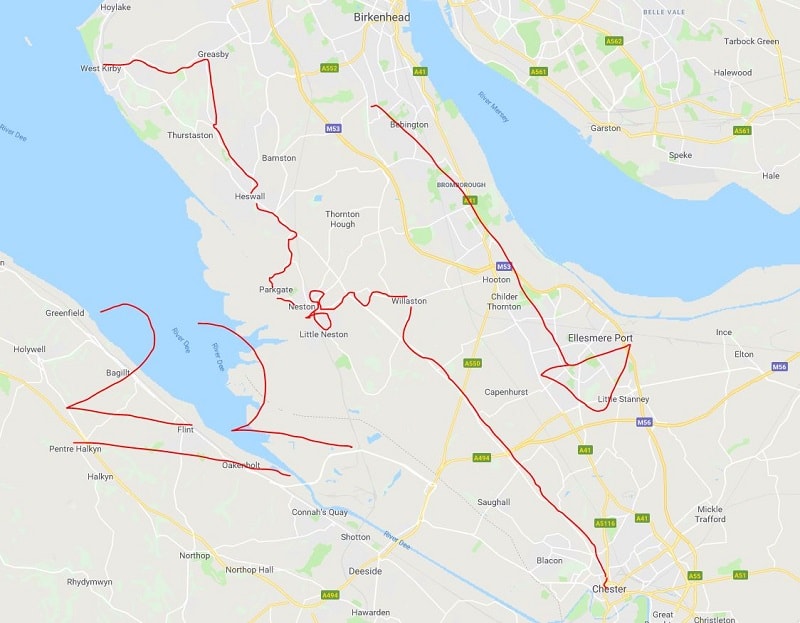
Route: 22, West Kirby to Chester
Operator: Stagecoach
Timetable: Hourly (Mon-Sat). No Sunday service.
Time: ~1 hour 40 mins (from West Kirby); ~1 hour 55 minutes (from Moreton)
Cost: £4.80 Solo Day Ticket
Date of Trip: 23/3/19
Bus-ting a Move: Ian & Eleanor
After de-crumbing myself of the remnants of Eleanor’s rancid sausage rolls, the 22 to Chester beckons. Arriving at the stop outside West Kirby railway station just in the nick of time, we climb aboard to take our place behind a lady and her pet mongrel, who, with an extra couple of pinches of salt in the pepper pot, appear to be greying at exactly the same rate as each other. The dog slouches in the aisle as we set off, his back legs slung away to the left. He yawns, resting his head on his front paws, and there’s not a comfier animal on the whole of the Wirral.
We are exiled to the off-side of the bus, the driver’s cab obscuring the view of the road ahead, but it has its advantages. We wouldn’t otherwise have spotted an elderly handyman wobbling slowly along the pavement of Greenbank Road on his bike, riding at barely walking pace with a couple of saws dangling perilously from either side of his handlebars, their teeth clearly skinning the top of his knees. Why he hasn’t thought to turn them around, I really don’t know.
The wide green playing fields of Hilbre High School glide by, where Daniel Craig and Chris Boardman shared the corridors in the early 80s, with members of The Coral passing through a decade later. Despite my old school being the biggest in Manchester, we’ve only really got Nicky Butt on our roll of honour. Nobby Stiles’ son did teach me science for a term, though, the highlight of which was when he answered a sincere question on the contrary etymology of blow-jobs without any hint of embarrassment.
The further reaches of West Kirby are a gentle plod through a world of semi-detached houses and the tiniest granny flats you’ll ever see, each hardly bigger than a garden shed. St Michael’s Church is a startling, modernist fish out of water against this backdrop, with a cluster of angular tetrahedrons protruding from its roof into the sky like a holy Sydney Opera House.
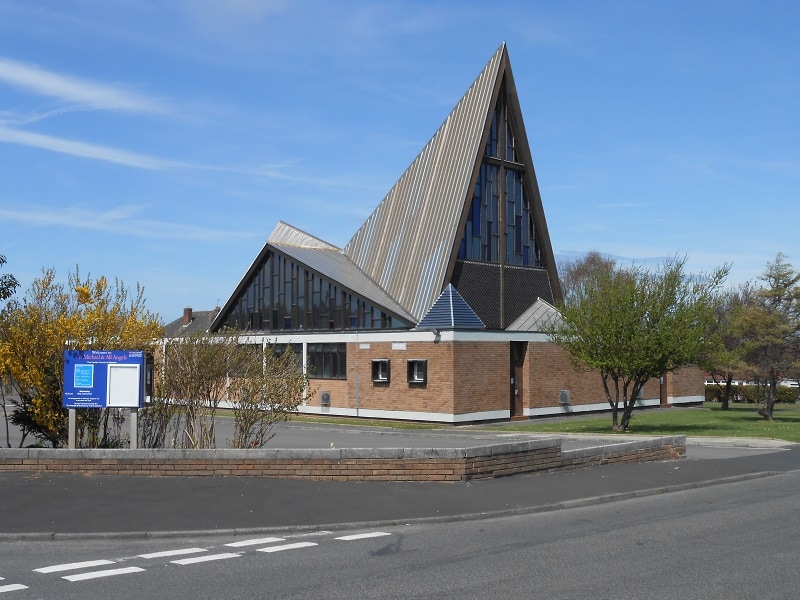
Moments later, the suburbs are behind us, and pretty Frankby introduces itself via what could be a show home for cemeteries. An army of daffodils are having their last hurrahs, while trim rows of gravestones extend out from a treelined grand boulevard, which itself begins just beyond the immaculate front gate. If this all seems a bit immodest for a graveyard, it’s because it’s on the site of Frankby Hall. A castellated stately pile built by the Royden Family; it is now used as the cemetery’s chapel. The Roydens came to prominence by operating their own ship yard on the Mersey for most of the 19th century, including launching the unorthodoxly named SS Lesbian.
The last in a long line of Thomas Roydens was vice-chairman of Cunard when its flagship passenger liner, the Lusitania was sunk by a German U-boat off the coast of Ireland in 1915, taking almost 1,200 lives to the bottom of the Atlantic with it inside 18 wretched minutes. The company lost 20 ships during WWI, 19 of them due to enemy action, including the Carpathia, the boat which had earlier steamed to the rescue of the survivors of the Titanic. Thomas became chairman of the firm shortly after the end of hostilities, by which time he was already busying himself as the Conservative MP for Bootle.
His sister, Maude, the youngest of a brood of eight children, took a radically different path. A committed suffragist, pacifist and social reformer, she began the campaign for women to be ordained into the Church of England as long ago as 1929, and became the world’s first female Doctor of Divinity a couple of years later. She’d been preaching all over the world for a decade by that stage anyway. Clearly believing patience to be a virtue, she married the Rev. Hudson Shaw after they’d been in love with each other for 40 years. The clergyman’s first wife, Effie, fully encouraged their relationship, and when she died in the early 1940s, Maude and Hudson finally made things official and tied the knot in October 1944. He died two months later, aged 85, but they got there in the end.
Maude followed in 1956, aged 79, and is now immortalised on the plinth of Millicent Fawcett’s statue in Parliament Square.
There’s more action down the road at Arrowe Park Hospital, where a troupe of old ladies disembark. One of them, in a pale blue coat, must be going to see several people, as she has a shopping trolley bouncing behind her fully laden with green grapes and bottles of Lucozade. Before it became an energy drink tour de force, nobody ever bought Lucozade for pleasure. It was always something to drip-feed to the infirmed under the misguided premise that an overload of sugar was somehow an elixir for the bedridden.
In fact, it was advertised as such and sold in pharmacies. The slogan ‘Lucozade aids recovery’ became so etched into the nation’s psyche that it’s still the first product people pick up when illness abounds. I even bought a bottle for my dad with my pocket money after he accidentally swallowed some cave water and was rendered immobile for a fortnight when I was a little boy.
After a brief wait to trigger our timing point, we’re off again alongside the wooded flanks of Arrowe Park itself towards the trim hedgerows of Thingwall, Pensby and Heswall. The latter is a very well-heeled town, where the compact bus station has a bandstand-cum-waiting room with a wrought iron canopy to keep the elements at bay. It also specialises in café-bars with terrible names, Bar Code being the chief offender, while the Harvest Mouse pub has a full size fake windmill bolted onto the side of it for an overdose of faux-rustic charm. Just down the road on the edges of Gayton, perhaps nothing illustrates the philosophy of ‘the more things change, the more they stay the same’ better than a sign which is advertising ‘Alpaca Poo. £3 per bag’. Depending on the size of the bag, that could be an absolute bargain.
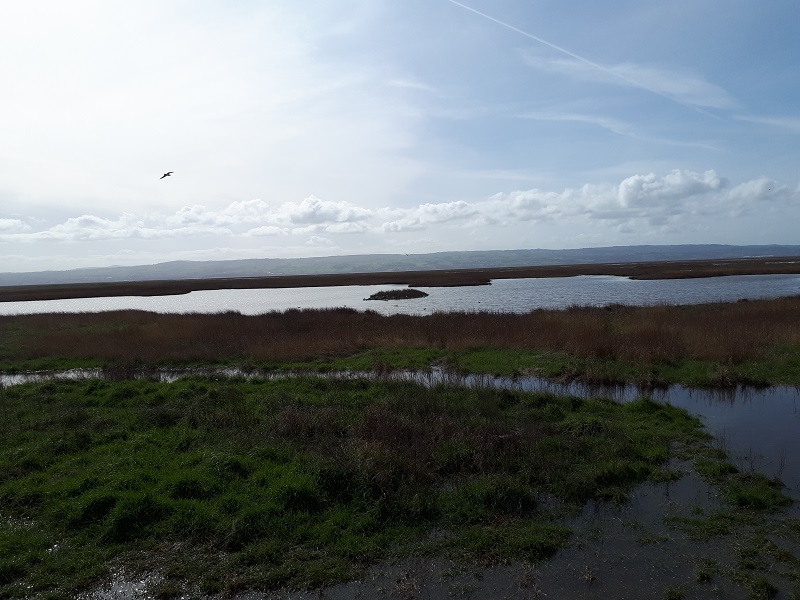
The bus crosses the border into Cheshire, darting across the dual carriageway to begin its descent into Parkgate. The landscape immediately transforms, with the commuter belt being left temporarily behind as beautiful views of the glinting River Dee play peekaboo between the trees. I was half expecting that the bus would follow the estuary down to Chester, but we’ve rarely been less than a couple of miles inland until now. It’s worth the wait, though. So much so that we decide to split the journey. The only outsiders likely to know of Parkgate’s existence are twitchers, who are strewn along the prom with their lenses pointing out towards the salt marsh, which isn’t even a stone’s throw away, you’re practically right on top of it.
The marsh is an RSPB nature reserve which runs for miles along the shore, and shelters scores of birds among its grasses and intertwined channels. The pavement along The Parade is so narrow that it necessitates either walking in single file or striding along the sea wall, which has been worn concave by tens of thousands of feet down the years. Distant chimneys from a factory in Wales churn out thick white vapour, with Flint and Connah’s Quay hinted at, but not quite visible with the naked eye across the water.
The buildings on Parkgate’s front mostly have whitewashed walls interspersed with black timber struts. The best example is undoubtedly Mostyn House School, which stretches out over multiple uneven levels and has been renovated into flats since its last pupils left in 2010. As this section of the village is a conservation area and the old school is a listing building, it’s one of those rare conversions which has quietly improved on what was there before, and it isn’t in anyway obvious that the place is now a series of apartments.

Next door is The Ship Inn. It’s one of life’s most vital truisms, admittedly one that I made up, is that you should always trust a pub called The Ship. I’ve genuinely never had a bad experience in one. From the old fisherman’s pub overlooking Mousehole harbour in Cornwall, via The Ship in Caister with its cheap pool table and forest of hanging baskets, to the student haunt that started it all for me, The Ship in Preston, they’re all great. Well, the Preston one is long gone, but you know what I mean.
It’s heaving inside with day trippers making the most of the scanty warmth emanating from the early spring sunshine. There are no tables free, so we perch on the edge of a bench for six where a middle-aged couple are just about to order their dinner.
“Don’t worry, we’ll clear off as soon as your food arrives.” I say, knowing how much I hate eating in front of strangers. Or my family, come to think of it.
“Don’t be daft,” the lady replies, as though it’s her own living room, “stay as long as you like.”
“We’ve got a bus to catch in about 40 minutes, so we’ll have this pint and clear off.”
“You’ve got a deal,” she says, extending her hand, “I’m Kerry.”
Kerry and Paul are from Widnes, a town a few miles to the west of Warrington which is under a strong enough pull from Liverpool to have warped the accent into all kinds of unexpected shapes. Paul is a season ticket holder at Widnes Vikings rugby league club, who have been so close to going bust recently that fans have been pouring as much of their own money in as possible to save it.
“There’s this one kid who’d been saving up for a year for a bike.” he explains. “They brought him onto the pitch to hand over his piggy bank, basically. What he didn’t know was that all the players had chipped in for a brand new bike for him, and when they wheeled it out, there we these big hard blokes bawling their eyes out.”
“Were you one of them?” I ask.
“I think it might’ve just been a speck of dirt.” he says with a chuckle, “But anyway, so was the guy on the microphone.”
It’s the way he says ‘microphone’ where the two linguistic worlds collide. He pronounces ‘mic’ almost like a full-blooded Scouser, an oyster of phlegm rattling around his larynx, before ‘rophone’ emerges in pure elongated Lancastrian. It’d be the perfect voice if Nick Park ever makes another series of Creature Comforts.
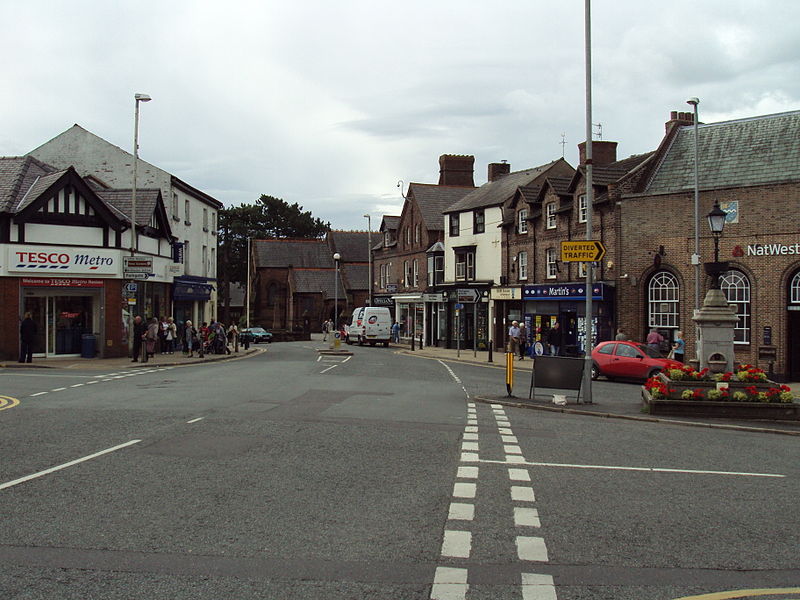
Draining our drinks, we head back outside to catch our second 22 of the day. It’s a short chug uphill to cheerful Neston, which the bus takes such a shine to that we visit the same crossroads three times from different directions on our long circuit of the town. One of these legs takes us into Little Neston, most of which is an estate made up of uninspiring detached houses, where multiple car driveways take precedence over front gardens and most residents are a ride away from the nearest row of shops. The other side of the main road is more traditional, and hosts today’s Weirdest Street Name Award winner: Badger Bait.
Cherry blossoms are out in full force as we take an unscheduled diversion down Liverpool Road, which means that we pass Hinderton Hall. It was the former home of Sir Percy Bates, who coincidentally succeeded Thomas Royden as the chairman of Cunard in 1930. It was also one of the first commissions taken on by Alfred Waterhouse, the architect behind the Natural History Museum, Manchester’s Neo-Gothic Town Hall, and proving that he could turn his hand to just about anything, Strangeways Prison. This afternoon, it has a pheasant and wood pigeon teaming up to forage in its grounds, while a few particularly woolly sheep sunbathe oblivious to the game pecking around for seeds near their trotters.
Back on our intended course, the bucolic nature continues as we reach Willaston, where homely prettiness oozes from every old farmhouse, converted barn and cute cottage. This is backed up by a sign on its green declaring it to be the Best Kept Village (of what isn’t clear), alongside a sculpture which looks like a giant Polo Mint, but turns out to be a millstone. It was taken from the former local windmill – a real one this time – after its sails were torn to shreds in a storm in 1930 and never replaced.

The bus is on its final run into Chester now, along a 9 mile stretch of road which is as straight as the arrow of time and as flat as a month old glass of Coke. It’s tempting to call it featureless, but in among the smattering of out of town hotels, there’s arable land in the early stages of growth all around us, which will erupt into colour in the coming months. Besides, how can it be featureless when there’s a paddock by the road where horses, pigs and emus are all stretching their legs.
With the effects of that pint lulling us both to the brink of sleep, Chester can’t come quickly enough. The new horseshoe shaped bus station is right on the ring road, replacing its grubby but more central predecessor in the summer of 2017 at the cost of £13m. It’s a vast improvement and seems like money well spent. Seeing as it’s only an hour down the road from us, Chester is a city that we hardly know at all, and it’s been so long since we were here that our stroll down Frodsham Street, with its peculiarly placed wooden posts, feels completely new.
“Mold?” Eleanor say incredulously at the destination display of the #4 bus as it goes by. “Where’s that?”
“Wales. It’s on my list.”
“Oh good, I can’t wait.”
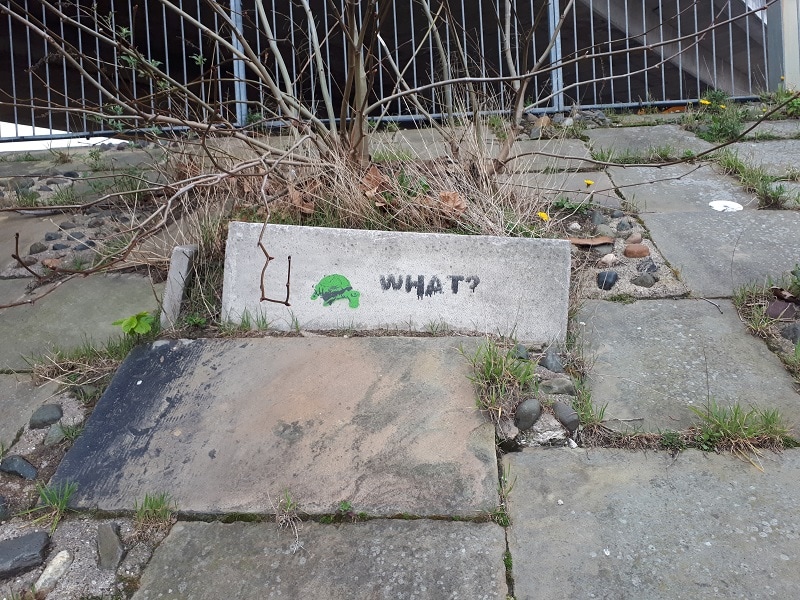
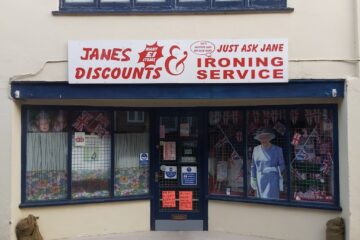
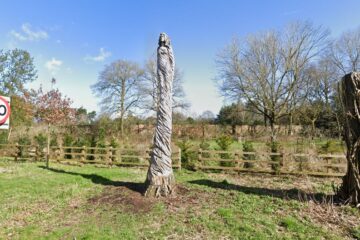
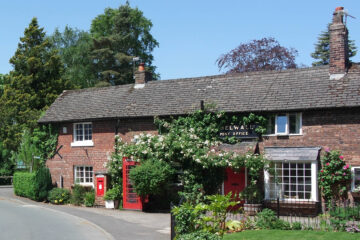
0 Comments